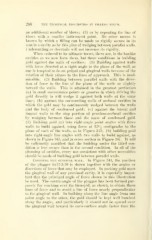Page 568 - My FlipBook
P. 568
268 THE TECHNICAL PROCEDURES IN FILLING TEETH.
an additional number of blows; (3) or by repeating the line of
blows with a smaller instrument point. No other means is
known by which a filling can be made so rigidly secure in its
seat in a cavity as by this plan of wedging between parallel walls.
Undercutting or dovetails will not increase its rigidity.
A\Tien reduced to its ultimate terms, there are, in the boxlike
cavities as we now form them, but three conditions in building
gold against the walls of cavities: (1) Building against walls
with force directed at a right angle to the plane of the wall, as
one is tempted to do on pulpal and gingival walls because of the
relation of their planes to the lines of approach. This is inad-
missible. (2) Building between parallel walls with the direc-
tion of force in the line of the plane of the walls or slightly
toward the walls. This is attained in the greatest perfection
(a) in small convenience points or grooves in which driving the
gold directly in will wedge it against both walls at the same
time; (b) against the surrounding walls of occlusal cavities in
which the gold may be continuously wedged between the walls
and the body of condensed gold; (c) against the buccal and
lingual walls in the step portion of proximo-occlusal cavities
b}^ wedging between these and the mass of condensed gold.
(3) Building gold (a) into right-angle point angles with three
walls to build against, using force at 121/2 centigrades to the
plane of each of the walls, as in Figure 343; (b) l)uilding gold
into right-angle line angles with two walls to build against, as
shown in Figure 345, and in cross section in Figure 347. It will
be sufficiently manifest that the building under the third con-
dition is less secure than in the second condition. In all of the
planning of cavities, every use consistent with other necessities
should be made of building gold between parallel walls.
Covering the gingival wall. In Figure 344, the position
of the plugger 6x12-5-10 is shown together with the angles or
directions of force that may be employed. In packing gold upon
the gingival wall of any proximal cavity, it is especially impor-
tant that the principal angle of force shown in this illustration
be used. The coutra-angle of the i^lugger has been formed pur-
l)osely for reaching over the bicuspid, as shown, to obtain these
lines of force and to avoid a line of force nearly perpendicular
to the gingival wall. In l)uil(ling along the line angle from one
l)oint angle to the other, the gold should be kept well bunched
along the angle; and particularly it should not be spread over
the gingival wall toward its cavo-surface angle faster than the


